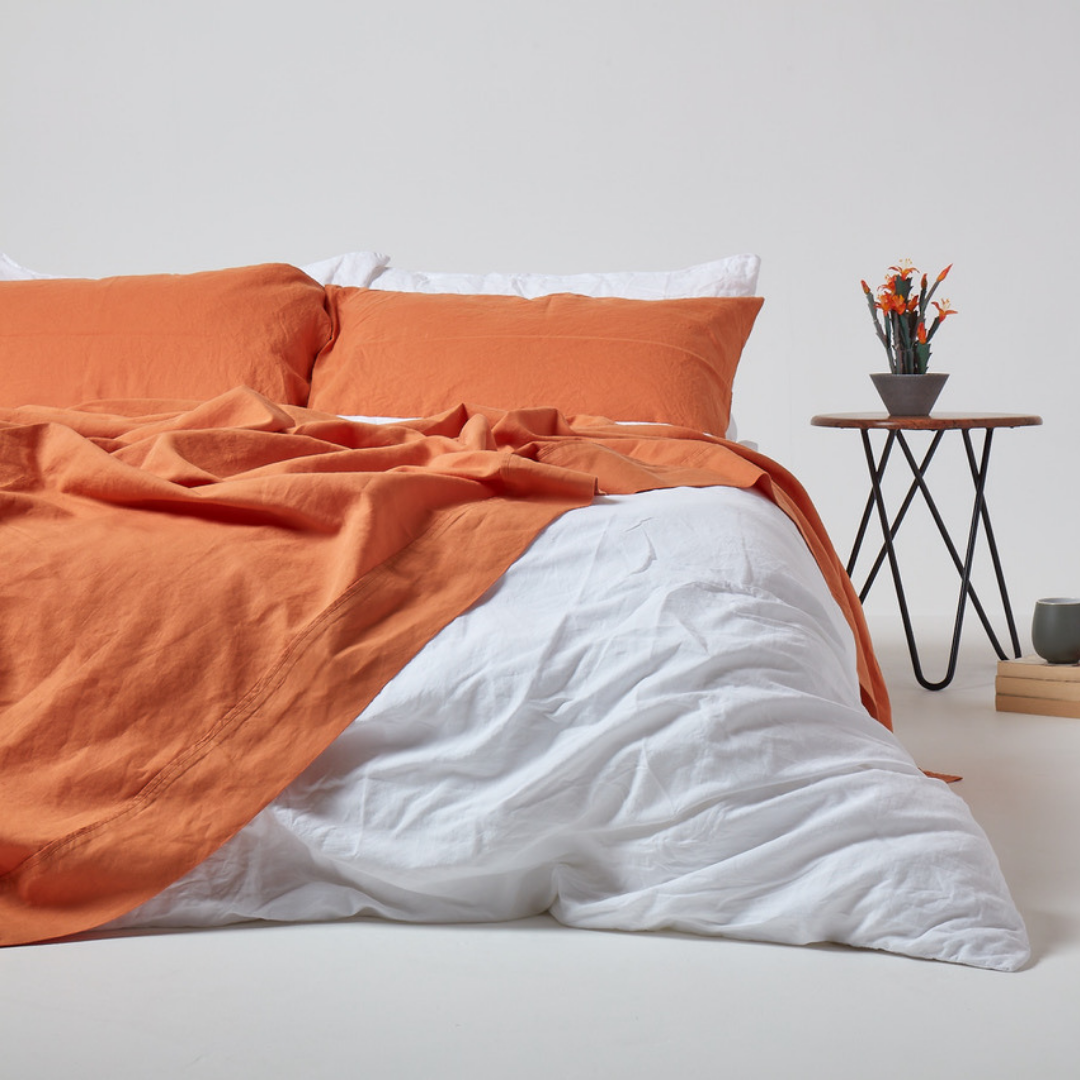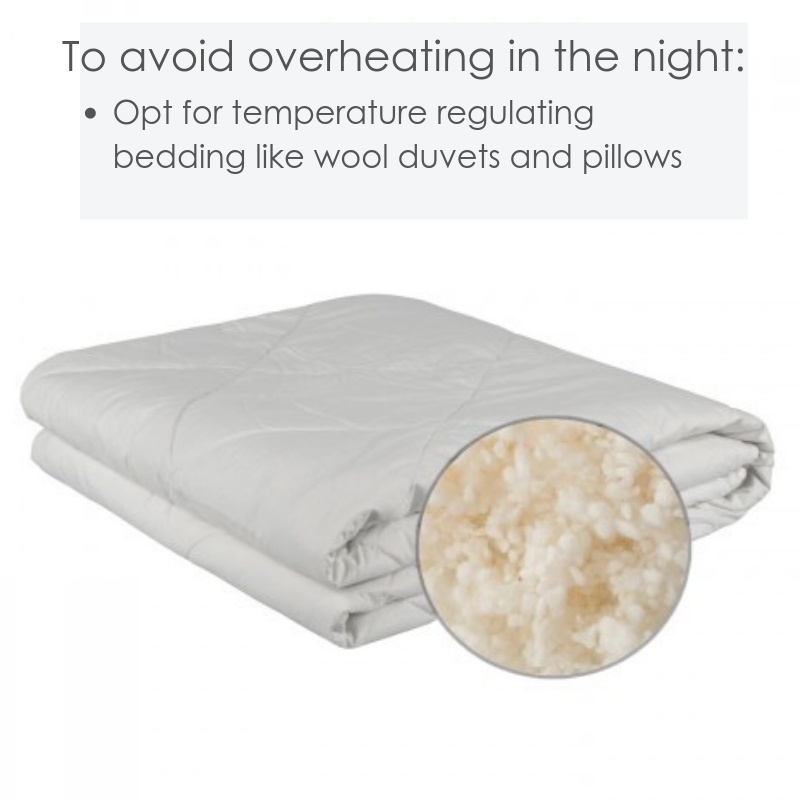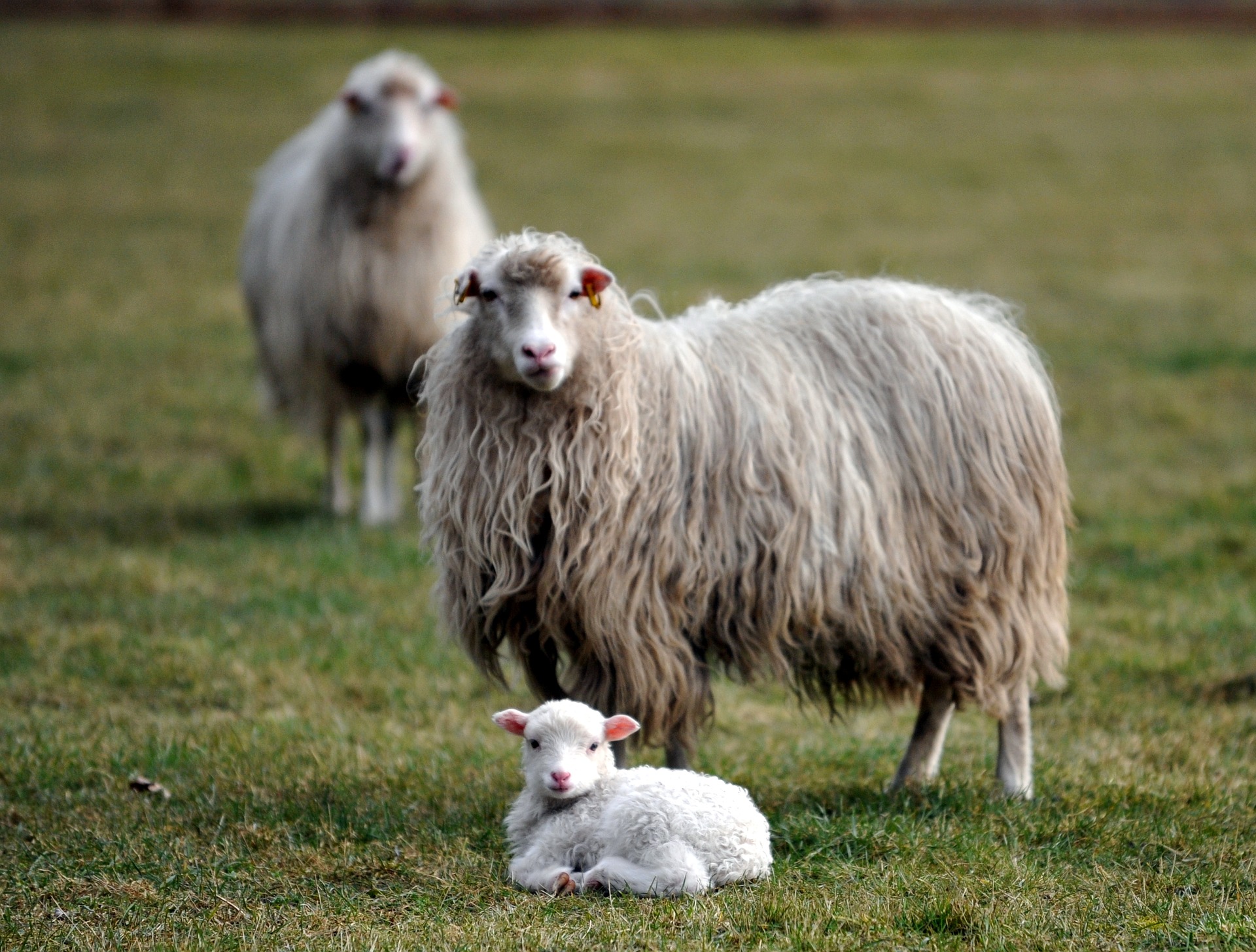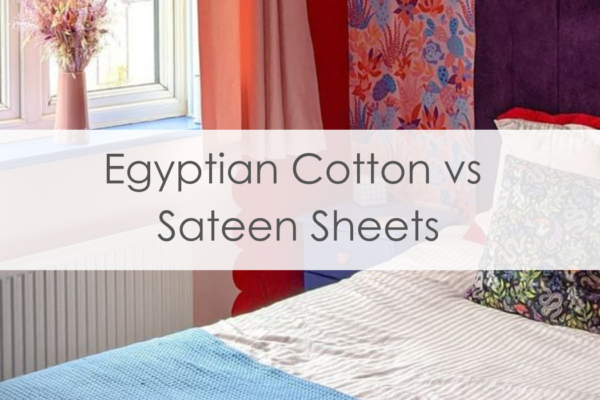Here at Homescapes, we are proud of our vast bedding collection and the thousands of happy customers who are using it every day. With years of bedding knowledge, research and design we are proud to offer a comprehensive duvet selection that includes the finest crisp cotton pillowcases, 100% Egyptian cotton sheets and cosy duvets for you to snuggle into night after night. Alongside this are our range of over 80 pillow choices, from traditional feather fillings, synthetic Microfibre, to more specialist buckwheat and spring-filled designs. In a nutshell, we know what we’re doing and we do it well.
Introducing our Wool Bedding…
A popular, natural form of insulation that has been used for thousands of years, wool is an adaptable textile fibre that has many naturally occurring properties, making it the perfect choice for bedding. Fast becoming one of the nation’s favourite duvet and pillow fillings it is the optimal choice if you are looking to invest in long-lasting, comfortable bedding that is suitable all year through. So after in-depth research and development, we are pleased to introduce you to our new range of wool-filled duvets and pillows.
Why choose Woollen Bedding?

With duvets in general, they have a tog rating, and this can be seen with our synthetic and feather options. Wool does not have such a rating because wool cannot be rated on this scale. To measure the tog is to measure thermal resistance. Synthetic fillings such as Microfibre have a specific and measurable thermal resistance depending on the amount used and layers formed within the duvet. The same goes for feather fillings. In the case of wool, it cannot be rated because it doesn’t have a single measure of thermal resistance, it varies and much depends on the person sleeping underneath it.
Put simply, wool is a natural, self-regulating fibre that adapts to the temperature around it (or under it) rather than creating a constant level of warmth (that’s why sheep are always warm, whatever the weather).
Self-Regulating – How does that work?

In some instances, you may become too warm and begin to perspire. Unlike synthetic duvets that trap humidity and moisture, the wool naturally draws the moisture away from your body which is then evaporated away into your surroundings. This means that you won’t have that hot and clammy feeling often associated with synthetic or high-tog duvets, leading you to wake up and kick the covers off during the night.
We, therefore, recommend that if you are looking to purchase a wool duvet, you consider your body temperature rather than the season or weather. If you are a hot sleeper, who expels a lot of heat whilst sleeping, we recommend a lighter weight wool duvet (equivalent to a 4.5, summer tog), alternatively, if you tend to feel the cold and require a warmer duvet, we recommend the heavier wool duvet (equivalent to a 15 tog, winter duvet).
Wool duvets are also ideal if you suffer from a fluctuating body temperature, and they are ideal for women currently going through menopause, as evident in a recent customer review:
“May seem thin, But it’s really warm! It is helping with the menopausal problems!”
Woollen Bedding & Improved Sleep Quality
It is something that we all do daily and is an important factor for good health and well-being, so the lack of sleep or a disrupted night’s sleep can affect your daily routine and hinder your mood. Sleep is the time where our bodies and minds truly relax, so both quality and quantity need to be balanced to ensure we feel truly rested.
Sleep can be broken down into the following stages:
1. A restful and dreamy stage of light sleeping. This lasts 5-10 minutes.
2. A deeper stage of sleep where body temperature and heart rate lower. This is where our bodies begin to relax
3. The transition period between light and deep sleep.
4. Happening in bouts of 30 minutes, this stage is where our body starts to repair itself and where cell regeneration happens. This is often seen as one of the most crucial periods during sleep and lasts.
5. Deep sleep is where we start to dream, cells continue to repair and grow, and we start to go through REM cycles that get longer the longer we sleep.
The length of the first 3 stages varies depending on how tired we are, stimulants around us and other factors such as caffeine levels and food and drink consumption. Once we reach stage 4, this is where deep sleep begins.
It is stages 4 and 5 that are most important. They are crucial for growth and repair and are the most restful periods of sleep. If your sleep is disrupted, this may result in fragmented stages 4 and 5, which are vital to good health and wellbeing.
You can help encourage restful deep sleep by reducing possible external disruptions such as light and noise in and around your bedroom. But one of the most important factors that may contribute to sleep disruption is your body temperature.
Maintaining a constant, resting body temperature will make you more relaxed and ensure that you remain asleep for longer periods, rather than ‘tossing and turning’ because you can’t get comfortable. Due to the natural, temperature regulating properties that wool offers (discussed above) it is the ideal duvet filling for achieving a restful, deep sleep night after night. Furthermore, it is reported that using a wool duvet whilst sleeping could improve your sleep quality by up to 25%, resulting in more and improved stages 4 and 5, regenerative deep sleep cycles.
How Wool Bedding is Made
Carefully Treated

Homescapes wool is washed three times, at the start of the process, after the wool has been finely combed and after it has gone through our lapping machines. By doing this, we are sure that our wool filling is completely clean and fit for human use. Wool fibres consist of layers, often called scales, which are hook-like strands of fibre that can latch on to each other. By cleaning the wool, the fibres start to feel, encouraging the outer layer of scales to hook on to one another and bond. This creates a strong bind that is required when it is used for insulating purposes.
To remove traces of the naturally occurring oil lanolin, our wool is cleaned, pasteurized at a high temperature and treated to protect it. This process also ensures that our wool pillows and duvets can be machine washed by customers in their homes.
Hypoallergenic
A term widely used by bedding and homeware companies put simply, the word Hypoallergenic means something that has been made or adapted to reduce or minimise the possibility of an allergic response. Creating or adapting a product so that it is classed as hypoallergenic means that our duvets and pillows become accessible to more people.
Many people may think that they are allergic to wool and wool products, they may have also been told this by a specialist or doctor, but in many cases, it is the oils within the wool that causes the reaction. Wool naturally contains an oil called lanolin, often used in the manufacturing of cosmetics and toiletries – this widely used substance can cause skin irritation, and this reaction can lead to the assumption that they are allergic to wool fibres. The chance of a reaction occurring is also removed by removing the natural lanolin oil from the wool fibres.
Our entire range of wool bedding is encased within 100% cotton and because the wool filling has been thoroughly washed, treated and delicately dried, this trace of lanolin is eradicated, leaving our products lanolin free and thus hypoallergenic.
How to wash wool bedding
In the past, wool has received some bad press. Studies in the 1970s, conducted under extreme conditions, lead to wool being associated with the harbouring of dust mites and viewed negatively by the public for decades. This is simply not the case.
| Dust Mite Facts | Wool Facts |
| Dust mites thrive in hot temperatures. Their optimal temperature being 40C or higher | Wool is a temperature regulator. It works with body heat so shouldn’t exceed 37.5C |
| Dust mites thrive in humid conditions | Wool is a dry fabric. It naturally expels moisture. Unlike synthetic duvets that are an ideal environment for dust mites |
| Dust mites do not eat wool or dust | Wool is a dry fabric with no moisture, it is a barren environment unsuitable for dust mites |
| There are over 10 million dust mites in the average bed
*please note these are not bed bugs which are an entirely different species |
Wool is probably one of the best duvet fillings to opt for if you are looking to minimise dust mites in your home. |
No we have dispelled the stories of the past, we need to make sure that you are caring for your wool bedding correctly.
In theory, wool duvets and pillows do not require washing. Because of the lack of moisture within the fibres, simply air drying your duvets and pillows can refresh them between sleeps.
If you wish to wash your duvets, please ensure they are machine washed on a wool setting. This will ensure that they are washed at the correct temperature with adequate spin and rinse cycles. Because wool is such a delicate fabric, it is recommended not to tumble dry wool duvets as this can lead to clumping and further fibre felting, which disrupts the even spread and properties of the wool. To dry your wool duvets, we recommend that you air dry it. This can be done indoors on a clothes dryer or outside on a washing line if the weather is dry.
Homescapes wool pillows have a double casing, accessible via an enclosed zip. Because of this, you may wish to wash the outer casing as you would normally wash a cotton pillowcase. You can also wish to remove the wool filling and wash the inner case separately.
Now it’s over to you. If you’re in the market for some new pillows or a new duvet, why not give wool a go? We’re sure you will love it!





